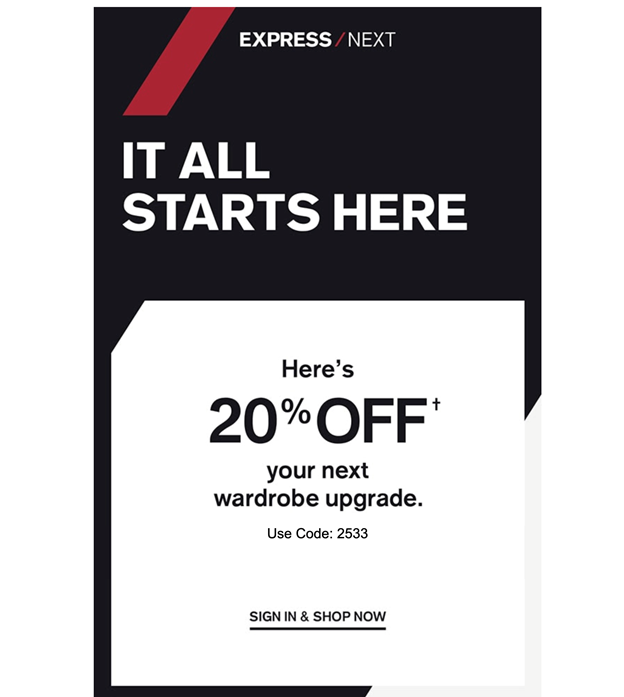The first interaction a new subscriber or customer has with your company is crucial. Welcome emails provide more touchpoints for new subscribers, establish brand authenticity and incentivize engagement. Within seconds, your business can establish trust, eliminate uncertainty and ensure effective calls to action. Using an automated workflow, you can personalize and strategically improve the content of your welcome emails to optimize conversion rates.
Here's a look at why welcome emails are important, and how to create one that grabs your subscriber's attention.

What is a welcome email?
Welcome emails are the first impression your company makes on a new subscriber or potential customer. It's a friendly message that establishes the new relationship while delivering videos, special offers, signup forms or just a general greeting. The primary purpose of this first interaction is to confirm registration and welcome the new subscriber aboard.
An effective welcome email is succinct, but packed with information, messaging and actionable steps for the reader. It will demonstrate a customer-first approach to business, while conveying your company's authenticity and relatability. Welcome emails mark the first opportunity for personalized subscriber experiences.
Editor's note: Looking for the right email marketing software for your business? Fill out the below questionnaire to have our vendor partners contact you about your needs.
Why are welcome emails important?
Like all first impressions, welcome emails are critical to a successful relationship. These emails can hook a new subscriber with a single word, image or personalization tactic. New subscribers tend to read welcome messages and make purchases when they are incentivized. However, attention spans are short with email communication, so your company has only a matter of seconds to gain a reader's interest.
Welcome emails introduce and detail the benefits of the subscriber's newfound community. The message showcases the defining characteristics that make your brand unique. Additionally, the message's presentation establishes credibility with the new subscriber, and provides evidence that the brand is worthy of their attention.
First interactions present a range of opportunities for your organization to build rapport with subscribers. It's a chance to warm up people and expedite purchasing timelines. It's also a perfect storytelling tool, revealing impressive facts, behind-the-scenes looks and key selling propositions. Welcome emails can invite new followers to social media and engage new subscribers with surveys to complement their profiles.

How to create a welcome email
Crafting a welcome email is strategic, but the content isn't complex. Simplicity is effective, and relatability is vital. The message's call to action (CTA) must be concise, convincing and explicit.
Here are the most important factors to consider when creating your welcome email:
- Personalization: Take full advantage of your email marketing software's personalization capabilities. Simply addressing new subscribers by name can inspire their engagement. Importantly, make sure you're communicating with your new subscribers in their language and according to their abilities. Web accessibility and universal design are crucial in e-commerce. Your company's digital content should be helpful to all experience levels. Ensuring web accessibility increases market share, enhances your brand and drives innovation.
- Engagement: The goal is to get people to click your CTA buttons. Your email marketing service can help you track your click-through rate (CTR) and your CTA button's success rate. Tracking engagement will allow your business to send welcome emails to new subscribers at the optimal time for interaction. Test out different personalization options, special offers and layouts to reveal your company's most effective presentation.
- Introduction: Writing the perfect email subject line is just as important as the email's content. The subject line is a great place to welcome the new subscriber by name, display a special offer and establish a conversational feeling. A friendly, casual greeting primes the reader to find the company likable, while a greeting from a company leader can give the business credibility by demonstrating authority.
- Expectations: A welcome email should provide a clear introduction to your services by illustrating impressive statistics, expert testimony, shared values and a sense of interdependence. Briefly explain the benefits of subscribing, and clearly outline what subscribers can expect from your company. In describing your company's services, you should aim to alleviate uncertainty and anxiety about commitment, build trust and transparency, and provide clear directions.
- Perks: A customer-first approach is the most effective. Always give more than you ask, and prioritize the improvement of the subscriber's well-being. Offer a perk, personalization opportunity, special offer or free trial before making your purchase request. People are more inclined to follow steps presented in sets of three as actionable headings, subheadings or bullet points. Welcome emails with three-step actions see higher conversion rates. Possible headers are "3 Things to Try Now" or "3 Steps to a Happier You." Within those three steps, ask the subscriber to purchase, shop, read, join or download your content.
- Connection: Much like the introduction, the end of a welcome message is a great place to humanize your company and build connections. It can be beneficial for the email's authors to identify themselves and engage with the audience through storytelling. Adding pictures of team members, authors, experts and subscribers can be more influential than any text in the message.

Welcome email best practices
People have short attention spans – and deal with hundreds of emails per day – so your company must compete for new subscribers' consideration. With the application of proven strategies, your business can stand out.
Here are some essential welcome email best practices:
1. Test and track your emails.
Utilize email marketing services to measure engagement, check the success of CTA buttons and conduct A/B testing. A/B testing – or split testing – is the process of sending two versions of an email to your subscribers. The emails will be identical with one variable changed. See what works best by varying subject lines, subscriber preferences or personalization tactics.
2. Create effective subject lines.
The first thing a new subscriber will see in their welcome email is the subject line. The subject line convinces the subscriber to view the message. Experts recommend that you include some kind of personalization, direction or offer in the subject line. The best subject lines are also concise – as most people open emails on their phones, and iPhones cut off subject lines at 32 characters. A compelling subject line can be as simple as "Welcome, [subscriber name]! Here's 15% off!"
3. Consider optimal timing.
Sending an email too soon after the subscriber signs up can sometimes cause them to miss it because they're still on your company's website. However, sending an email too late can be ineffective because the subscriber has already forgotten about your business. The optimal time for sending out a welcome email is often within an hour after signup. Sometimes, sending a series of three welcome emails can result in higher retention. In this case, it may be pertinent to consider that messages sent at 8 a.m. have the best email open rates, and emails sent at 5 p.m. have the best click rates.
4. Make the message scannable.
Because attention spans are short, refer to one thing at a time, present only one large CTA button, and use pictures to communicate, as people process images faster than text. Readers will follow the gaze of a person depicted in an image, so your welcome email can guide its new subscribers' eyes to the most important information in less than a second.
5. Appeal to subscribers' values.
People who feel your generosity will be more likely to comply with your request. Patrons will also be more inclined to act if they perceive something to be a limited opportunity. Offering a special, limited-time offer creates both reciprocation and a sense of scarcity.
People are also more likely to comply with your request if you present ideas that align with their commitments and beliefs. Sending a survey for personalized subscriber experiences can help define your audience's tendencies.
Subscribers are also more likely to comply with your request if others are doing the same thing, if people find you likable and see themselves in the company's community, and if authority figures promote the service.

7 examples of welcome emails for inspiration
Here are some examples of excellent welcome emails and why they work.
Cratejoy
A textbook example of what a welcome email should look like, Cratejoy knows exactly how to engage its new subscribers. The header warmly greets the recipient, while a clean image showcases an inviting subscription box. The copy that follows outlines what to expect in future communications, while a valuable coupon rounds out the messaging before the CTA.
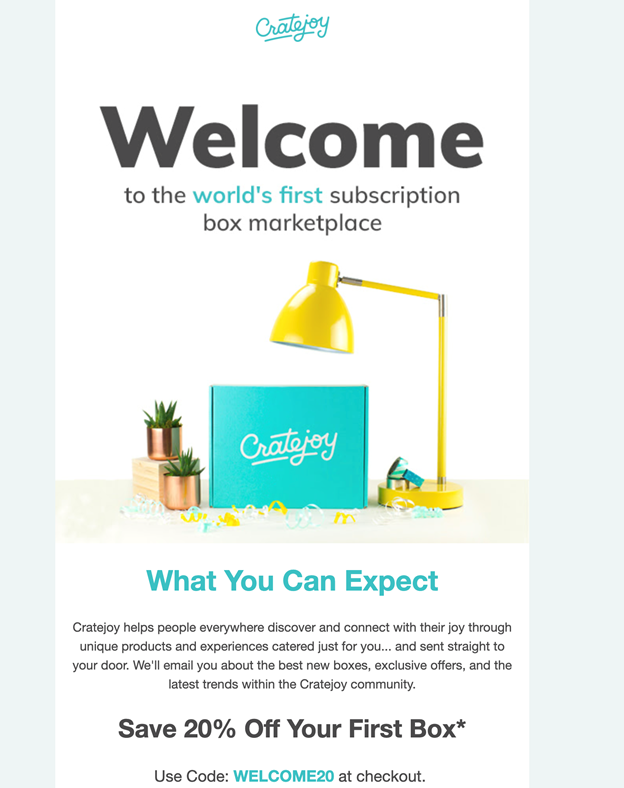
LEGO VIP
Sometimes welcome emails are for more than just salutations. This example emphasizes the benefits of being a LEGO VIP member, inviting recipients to sign in to their accounts on the company's webpage multiple times. This repetitive language – combined with the promise of rewards – compels readers to act.
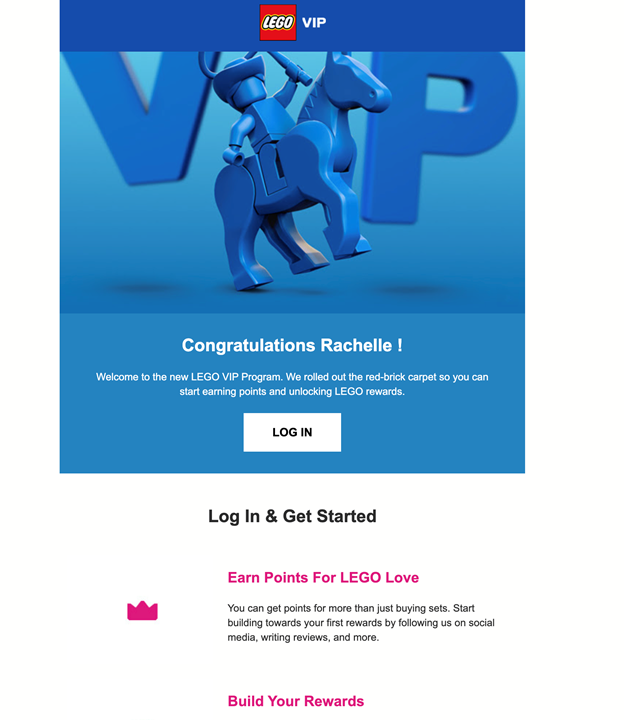
Cameo
Cameo's welcome email is all about the calls to action. It outlines ways to interact with the company, and encourages behavior beyond just a simple like or follow. By highlighting features of the app and prompting a download, Cameo sends a clear message: Keep engaging!
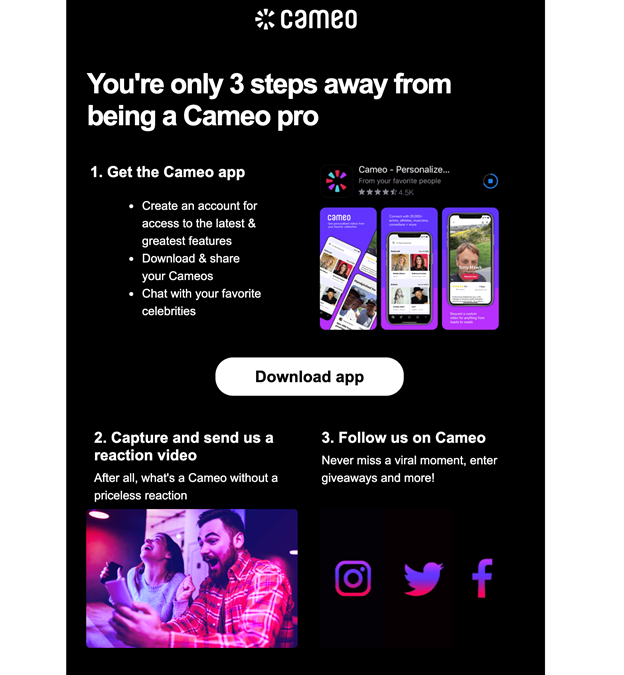
GoodRx Gold
This welcome email aims to ensure all subscribers know precisely how to use the service they signed up for. GoodRx's message reminds recipients of the benefits of membership while reiterating how it works. Straightforward instruction and visible perks drive this email's mission.
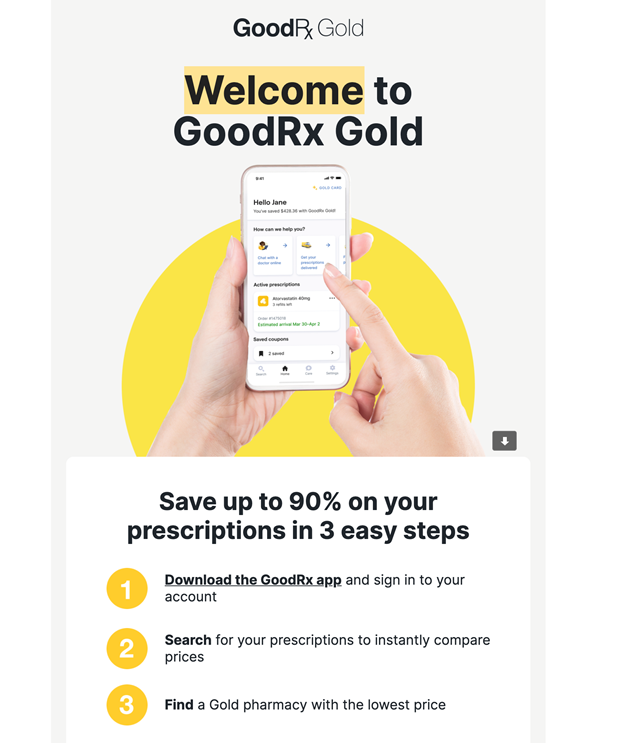
Ruggable
Welcome emails don't have to be complicated. Ruggable uses a simple yet fun design, relying on cute imagery to grab the recipient's attention. The messaging is concise, praising the new subscriber for their "great taste." After the positive reinforcement, the email's CTA includes an enticing offer.
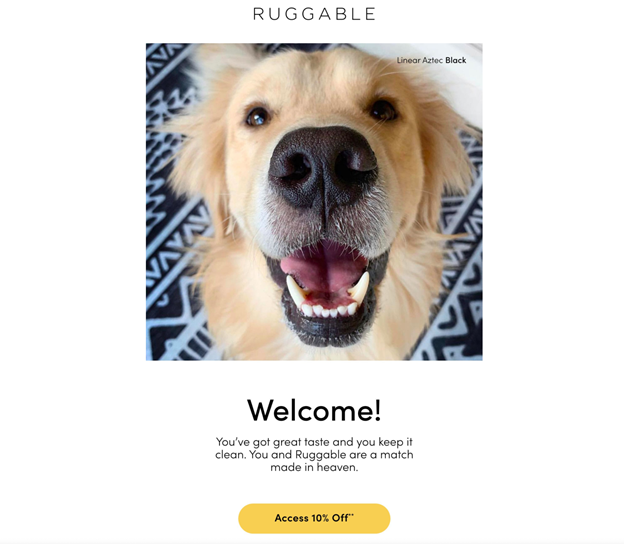
HalloweenCostumes.com
This delightful welcome email has it all: kind messaging, product highlights, and a special discount, all rolled into one great design. A bold header offers the recipient a "special gift" of 20% off – with a CTA button directly underneath – and a bevy of dynamic images seals the deal.
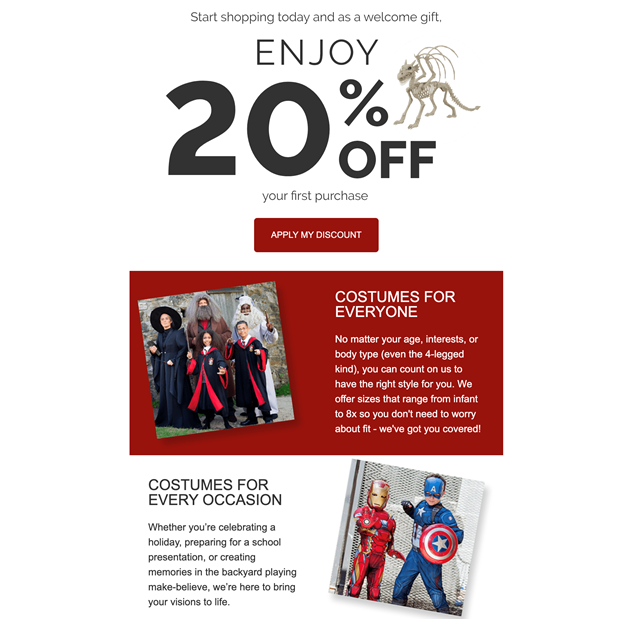
Express
Short, sweet and to the point, Express' welcome email gets straight down to business. Recipients are invited to act immediately, receiving a 20% off coupon for their "wardrobe upgrade." While the email lacks bold imagery, its concise CTA is more than enough to convert new subscribers into bona fide customers.
